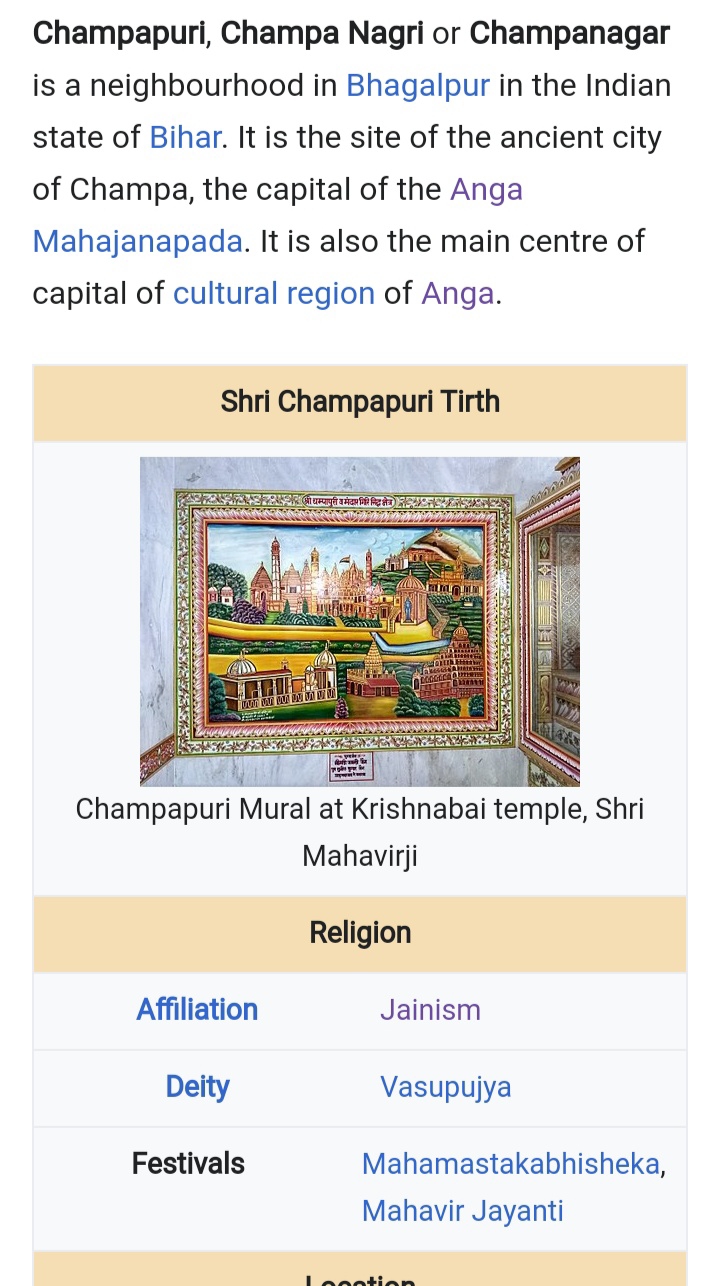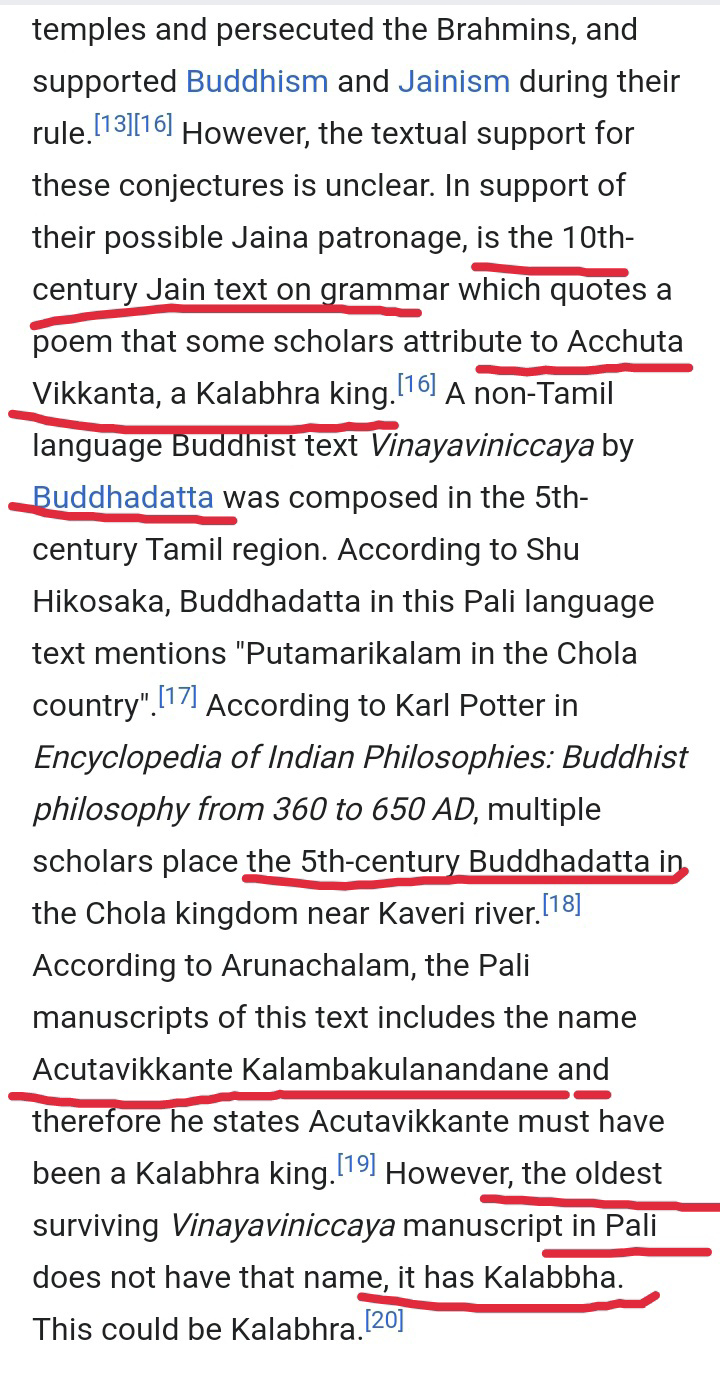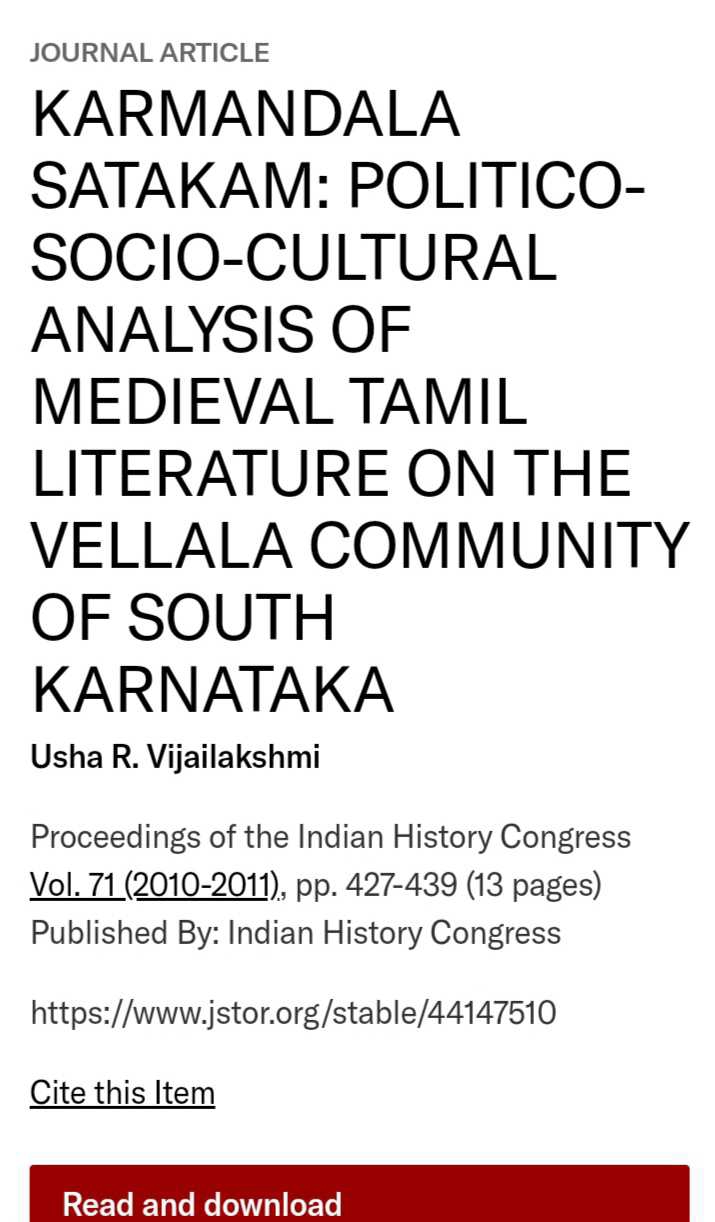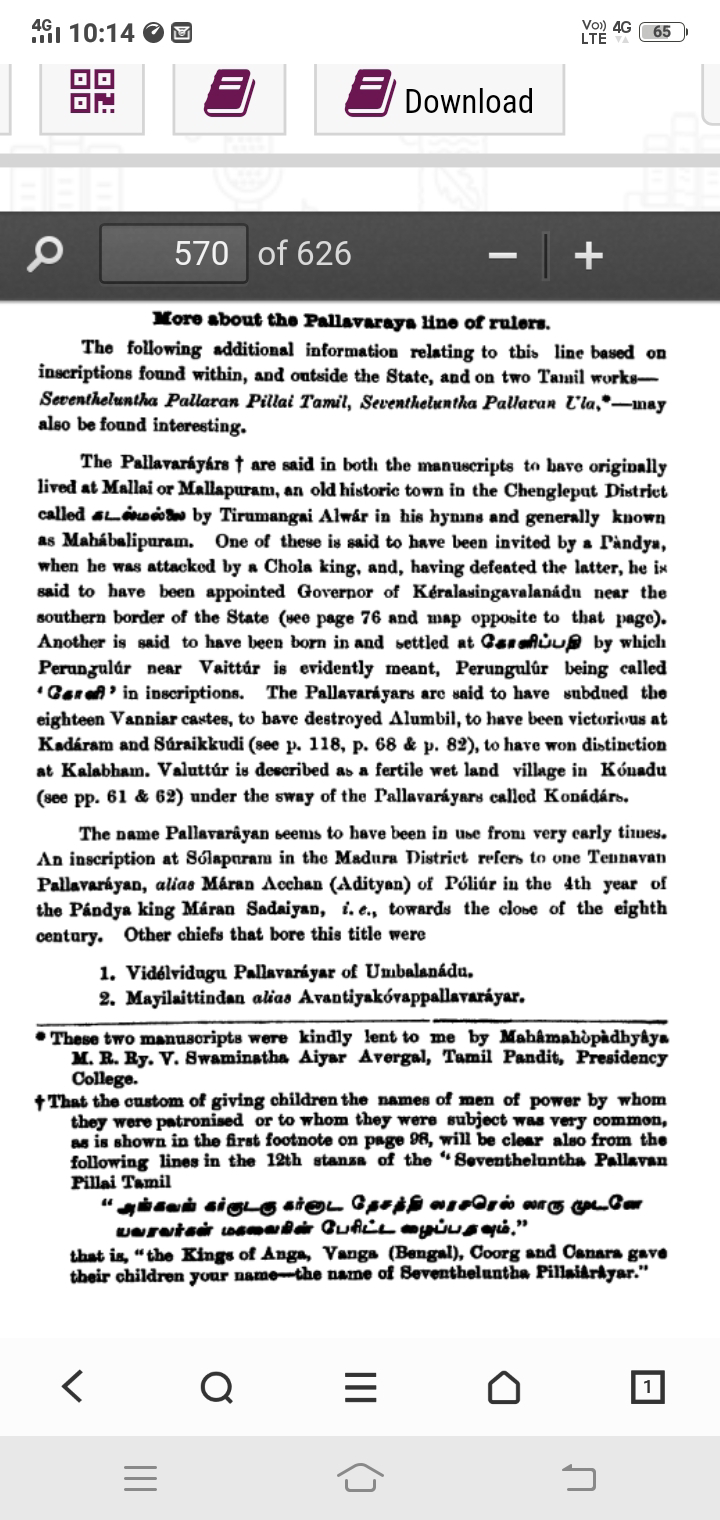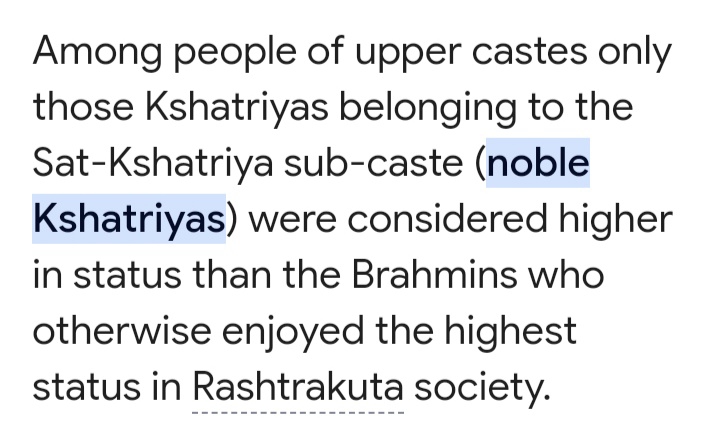Karkathar and Tirunelveli Saiva (Vellalar) are not Velalas? Are they Jains by Origin? What Varna are they?
Karkathar and Tirunelveli Saiva (Vellalar) are not Velalas. Are they Jains by Origin? What Varna are they?
Written by,
Pulavar Karthick Raja Pillai,
Karkathar Community,
Madurai
In the region ruled by Cheras, Cholas and Pandyas, Velan Manthar or simply Velalar is a term used to refer people of Shudra Varna or 4th Varna in Vedic Religion
Velalar = Other name for 4th Varna
In Tolkappiyam Literature, (குலமக்கள்) Savarna - 4
And here Velalar (வேளாளர்) is the name of 4th Varna
Those who don't fit in or included in Varna - 18,
(நிலமக்கள் - 5, வினைமக்கள் - 9, குடிமக்கள் - 4)
In a 10th Century AD, Tamil Glossary named Pingala Nikandu written by a Tamil Jain
again, Velalar is the name of 4th Varna
Here, we could see காராளர் (Karalar) - the other name for Karkathar, in Bhu-Vaishya Varna
The word Karalar was not present in any of before Tamil Glossaries (Nikandus) or Tolkappiyam
First time appearing in Varna System, in both Bhu-Vaishya ans Velalar Varna
The word Karalar first appears in the Tamil Literature named "Manimegalai"
Manimegalai - Buddhist Literature
It is written during Kalabhras rule (after 3rd century AD).
In this, in a section on King Janaka of Mithila Kingdom, the city of Karalar is described as "Sanbai (சண்பை) Nagara"
Karalar is the other name for Karkarthar or Tirunelveli Saiva (Pillai or Velalas)
Hence, The city of the "Karalar" mentioned in Manimakelai, which is said to have located near Mithila Kingdom is
The city named "Champa Nagar", in present-day Bihar
Mother of the Mauryan Emperor Ashoka - the daughter of an Ajivika Religion Brahman was from the same city of Champa
How did Karalars come to Tamil Nadu from Bihar?
In the 3rd century BC,
Chandragupta Maurya, the founder of the Mauryan Empire, anticipating a 12-year famine in the Magadha kingdom (present-day Bihar), abdicated the throne in favor of his son Bindusara. He then migrated with the people of Magadha and his Jain guru, Bhadrabahu, to the southern Karnataka region, where they settled.
The Mauryan's religion mainly consisted of Jainism, Ajivika, and Buddhism.
Their languages were Prakrit and Pali.
Jainism's language was Prakrit, while Buddhism's language was Pali.
Interestingly, 600 years later, in the 3rd century AD,
the Kalabhras, who were Jains and spoke Prakrit,
invaded Tamil Nadu from the same southern Karnataka region, overthrew the ruling powers (Cheras, Cholas and Pandyas)
and other group split from Satavahanas invaded Northern portion of present Tamil Nadu State at the same 3rd Century AD, speaking Prakrit Language and following Jain Religion established - "The Pallava Empire"
By the 12th century AD, the Karkathar or Karalar people of Tiruchengattangudi Mutt mentioned in their copper plate inscription that
they took pride in their lineage for "defeating the Three Crowned Kings" (Cheras, Cholas, Pandyas)
In the 8th-century
Pandyan-era
"Velveekudi Copper Plate" inscription,
the term "Kalappalar (களப்பாளர்) " is used to refer to the Kalabhras.
Similarly, in various Chola-era literary works, the Kalabhras are also mentioned as "Kalappalar".
Among 96 Gotra names of Karkathars,
1. "Kalappalar" is one of the Gothram
2. "Achutharayar (அச்சுதராயர்)" is another Gothram
Though only very few Kalabha kings names are known even today, most of their names start with "Achutha"
In the 5th century AD,
Buddhist literary work named Vinayaviniccaya,
mention that the Kalabhras king who ruled the Chola Region was Achutha Vikkantan (அச்சுத விக்காந்தகன்)
In the 13th century,
Meykandar Devar, the author of Saiva Siddhanta scriptures, was a Karkathar
His father's name was Achutha Kalappalar
Even today, most Karkathars follow the vegetarian tradition.
Who were the Kalabhras?
The terms "Kalaba" and "Kalamba" were used to refer to the Kalabhras during their time.
Their spoken language was Prakrit.
In North Languages,
the terms for Kalabhras mean "Dark clouds" or "Rain clouds"
Karkathar means "Protector of rain clouds"
Karalar means "Ruler of rain clouds"
Famous Kalabhras after the fall of Kalabhras rule
Eyarkon Kalikama Nayanar
of 8th Century AD
from a family, belonging to the lineage that traditionally held the position of military commander to the Chola dynasty
Here, Eyarkon Kalikama Nayanar is
mentioned to be born in Eyar Royal Lineage (ஏயர் கோக்குடி), as in Tamil Literatures
Eyar (ஏயர்) is the Tamil Word for "Haihayas"
Those who study Hindu Literatures may know about,
Kartavirya Arjuna, a famous Haihaya Emperor
and Haihayas as the opposite side of Lord Parashuram
And, in the name "Eyarkon Kalikama Nayanar",
Kalikama = means favourite person of Kali Lineage or simply a person of Kali Lineage
Kali refers to Kalabhras
Inscriptions mention
Kali Vamsa (Kalabhras dynasty) and Kali Arasar (Kalabhras kings)
How can Kalabhras be associated with the Haihaya dynasty?
We could learn it from
The 11th-century Sataka text "Kar Mandala Satakam (கார் மண்டல சதகம்)"
Kar Mandala (கார் மண்டலம்) , which is now southern Karnataka
This Satakam Literature mentions this region as "Karalar Mandala"
In this, the 18 Karalar dynasties that ruled Kar Mandala are mentioned as
Moriyas (Mauryas),
Haihayas,
Pallavas,
Kadambas,
Satavahanas,
Banas
Among these, Kalachuri also belongs to the same Haihaya lineage,
indicating that the Haihayas dynasty rulers came here as Kalabhras
Did only Haihayas arrive?
In the renowned book "Banadirayas in Pandiya Naadu (பாண்டிய நாட்டில் வாணாதிராயர்)",
Vanathiraya or Banadhiraya means
Bana + Adhi (Ancient) + Raya (King)
it is mentioned that during the later Pandya period,
Banadiraya was the name of the Pandyan throne.
I have recorded that the later Pandyas were of Kalabhras lineage, with their names in Prakrit,
In Contrast to Early Pandyan Kings, whose names were in Pure Tamil
Below 2 youtube vidoes are in Tamil Language,
Therefore, the Bana dynasty also came here as Kalabhras
In the 10th-century Pingala Nikandu (Glossary),
Ayyanar is mentioned as Satavahanas (சாத வாகனன்)
The Tirunelveli Shaivites (Vellalars) worship Sasta/Ayyanar as their kuladevam (family deity)
Here, Sastha refers to the Vegeterian deity
Thus, the Tirunelveli Shaiva (Vellalar) community came here during the Kalabhras period, and they are of Satavahana lineage
What is their Varna?
In 224 CE, the Satavahana Empire declined, and
thus, the fallen Karalar empires, seeking new territory, invaded Tamil Nadu as Kalabhras.
Jainism - a religion started against Vedic religion
Ashoka embraced Buddhism
During his reign, animal sacrifice and Yajna was banned across India
Maurya Empire acted against Brahmins
Similarly, Kalabhras also acted against Brahmins
Satavahana Empire, founded in 228 BCE, after the fall of Mauryan Empire
Tirunelveli Shaiva (Vellalar) - Could be Originally Buddhists or Jains, of Brahmin varna of Satavahana Lineage
After the decline of the Kalabhras,
Eyarkon Kalikkama Nayanar of Haihaya or Kalabhra Royal Lineage have fallen to the 4th varna, i.e., the Velalar varna
Therefore, the Haihaya dynasty within the Kalabhras, after the decline of the Kalabhras, have fallen to the 4th varna.
After the decline of the later Pandyas, both the Karkathars and Tirunelveli Saiva Pillais (Velalas) completely sank to the 4th varna, becoming Vellalars
Karalars are not Velalas
After the fall, they became 4th Varna
This is evident from their distinct vegetarian tradition,
while, other Velalas are Non-Vegeterians
Pallavas - Brahma-Kshatriyas?
Brahma-Kshatriya is not a varna in Hinduism; it originated in Jain mythology.
In Hinduism, Parashurama annihilated the Kshatriyas and later stated that offspring of Kshatriya women and Brahmin men would be considered new Kshatriyas.
In Jain mythology, Kartavirya Arjuna had a son named Shubanana, who killed Parashurama and slew the Brahmins, making the offspring of Brahmin women and Kshatriya men as a new varna named "Brahma-Kshatriyas".
This is mentioned in the 15th-century text "Vallala Charitra" by Ananda Bhatta
In the 11th century, the Seuna dynasty ruled Bengal and had a king named Vallalan and "Vallala Charitra" is about him
According to this, the Seuna kings were from Karnataka and belonged to the Brahma-Kshatriya varna
Ananda Bhatta mentions Pallavas and Kadambas as examples of the same Brahma-Kshatriya Varna
The Pudukkottai region was ruled by the Karkathar of Pallavarayar Gothram.
After overthrowing them, the Sethupathis installed the Kallars as rulers
Among the Pallavarayas, Sevantheluntha Pallavaraya (சிவந்தெழுந்த பல்லவராயன்) lived around 1580 AD
In the Sevantheluntha Pallavarayar Ula, a poem dedicated to him,
they are referred to as "Karalar" and
describe themselves as belonging to the Pallava dynasty
and originating from Mamallapuram
Additionally, there are references or evidences to prove that Pallavars were from Karalar Group (Karkathar and Tirunelveli Saiva Velalas (nor originally Velalas))
What varna (social class) did the Karkathars and Tirunelveli Saiva (Vellalars) belonged to, before they have fallen to the Velala varna?"
The caste hierarchy in Jain Empires,
1) Sat-Kshatriyas - This is the first and highest caste, which includes royal and princely families; they are mostly vegetarians.
2) Brahmins
3) Kshatriya - This is not of the king's caste, but they consists of soldiers; they could drink liquor and eat non-vegetarian food
So, if Karkathars and Tirunelveli Saiva (Vellalas) are of Kalabhra Royal Lineage
Which group was the Kshatriyas who came along with the Kalabhras?
Though we could predict, i don't want to mention as it may affect their politics
After the 14th century, the Karkathars and Tirunelveli Saiva (Vellalars) fell to the 4th varna, i.e., Velala Varna
Originally,
- Karkathars: Sat-Kshatriyas, Brahman-Kshatriyas (Pallavas)
- Tirunelveli Shaivites (Vellalars): Sat-Kshatriyas, Buddhist/Jain Brahmins, Brahman-Kshatriyas (Pallavas)
Just if you type "Saiva Vellalas" in google search, you would get this result,
Continuing from this, in Sri Lanka, the Shaivites (Vellalars) were considered the first varna (highest caste) in the social hierarchy
Despite their downfall, the Karkathars and Tirunelveli Shaivites (Vellalars) are still regarded as superior, even above several royal and Brahmin castes in South India, due to their ancestral varna
We all have to know that,
In the Indian subcontinent, the Maurya Empire ruled the largest land area (5 million sq km).
Mughal Empire (4 million sq km) is the second largest empire so far.
After the Maurya Empire's decline, the breakaway Karalars ruled South India for the next 1000 years
Though, we could identify Karalars, we have to find the groups which would have settled in other states
Surely, they could be vegeterians even today
I request Karkathars and Tirunelveli Shaivites (Vellalars) to convert back to Digamber section of Jainism, our original religion and also the exclude the Varna title (Velalar) in our name, which was imposed on us, after our downfall
The below youtube video is in Tamil Language
Thank you
Based on my recent finding, i have to update all my previous blogs




